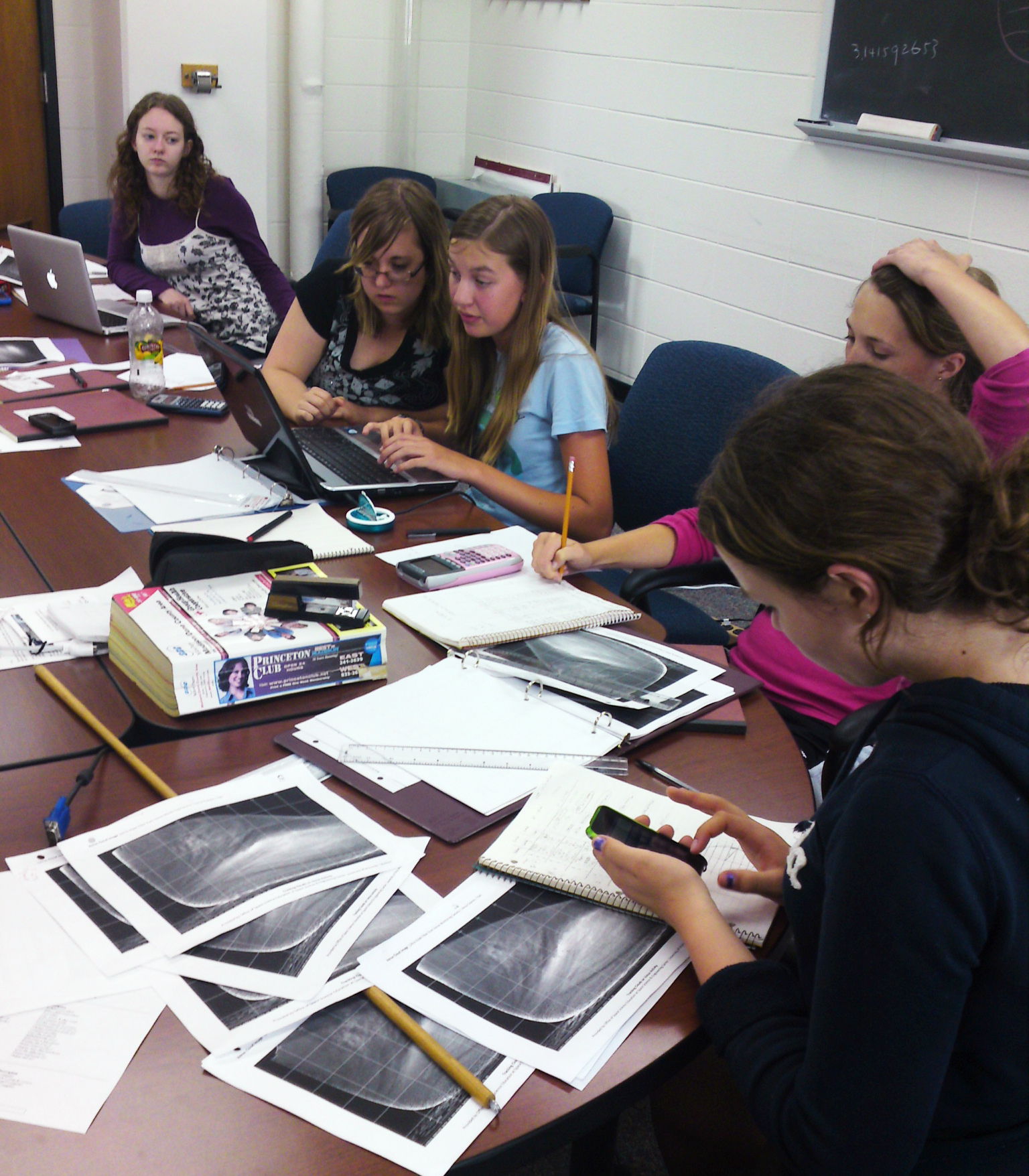Research Experience for High School Students
The Research Experience for High School Students Program is a hands-on, dynamic ten-week scientific research project hosted by OSSE at the Space Science and Engineering Center, UW-Madison. Participating students engage in an independent research project under the supervision of SSEC research scientists and science education specialists. This project provide students with a unique opportunity to experience the analysis of authentic science data in a university research environment.
Students will be given an introductory session to the research topic and science background followed by training sessions to review and further develop mathematic skills essential for the science project. Students also enjoy a special building tour to see the satellite dishes and spectacular views of the Madison campus from the rooftop of the 15-story AOS building.
Students will have the opportunity to submit an abstract and poster to the science research conferences/workshops at the conclusion of the research project.
2011 Summer - Measuring Winds on Venus
New Glarus High School, Wisconsin
 During the summer of 2011, the UW-Madison Space Science and Engineering Center hosted five high school students from New Glarus, WI. The students, ranging in age from 14 to 18, joined SSEC's team of Venus Experts, including Drs. Sanjay Limaye and Kevin Baines to conduct their own analysis of the European Space Agency's Venus Express data. The ten week summer program includes an introductory overview of historic Venus Space flight missions, as well as an emphasis of the relevance of current Venus climate research and the possible implications for earth's future climate. During the 2nd week, students focused on applying their mathematics skills, including geometry and trigonometry to track Venus clouds using several basic VEX data sets. By week four, all five students successfully "graduated" to using MCIDAS for the tracking and analysis of their own selected VEX cloud data. During the final six weeks the young women successfully conducted their own analysis of the VEX data. They were able tosuccessfully graph multiple sets of Venus Express cloud images and ultimately validate earlier studies of Venus wind vectors from Pioneer Venus (Limaye, 1982). Their summer project was completed with an abstract and poster submitted to the 9th VEXAG International Venus Workshop in Washington, DC (August 2011).
During the summer of 2011, the UW-Madison Space Science and Engineering Center hosted five high school students from New Glarus, WI. The students, ranging in age from 14 to 18, joined SSEC's team of Venus Experts, including Drs. Sanjay Limaye and Kevin Baines to conduct their own analysis of the European Space Agency's Venus Express data. The ten week summer program includes an introductory overview of historic Venus Space flight missions, as well as an emphasis of the relevance of current Venus climate research and the possible implications for earth's future climate. During the 2nd week, students focused on applying their mathematics skills, including geometry and trigonometry to track Venus clouds using several basic VEX data sets. By week four, all five students successfully "graduated" to using MCIDAS for the tracking and analysis of their own selected VEX cloud data. During the final six weeks the young women successfully conducted their own analysis of the VEX data. They were able tosuccessfully graph multiple sets of Venus Express cloud images and ultimately validate earlier studies of Venus wind vectors from Pioneer Venus (Limaye, 1982). Their summer project was completed with an abstract and poster submitted to the 9th VEXAG International Venus Workshop in Washington, DC (August 2011).
This opportunity was made possible through a NASA Grant. Additional support in the design and teaching of the project were provided by Rosalyn Pertzborn and Hsuan-Yun Pi. The SSEC Venus team also wishes to extend a special thanks to Dr. Jon Joseph, of New Glarus High School, whose outstanding commitment to his students has made this exceptional educational opportunity a reality.
